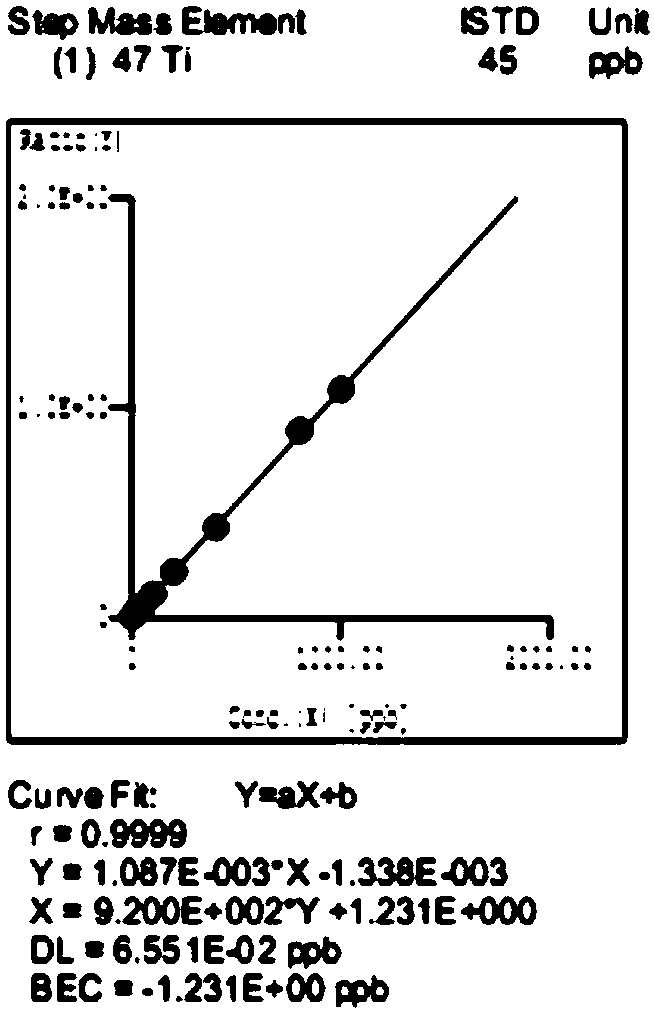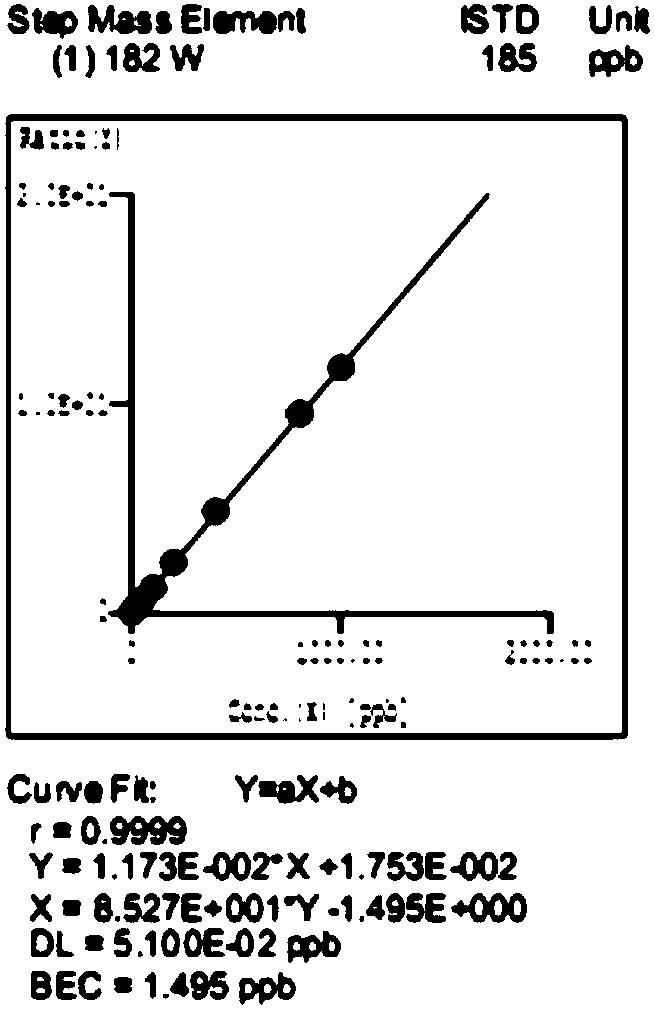Method for detecting contents of vanadium, tungsten and titanium elements in SCR (selective catalytic reduction) catalyst
A technology of SCR catalyst and element content, applied in instruments, measuring devices, scientific instruments, etc., can solve the problems of inaccurate detection, inconvenient calculation of vanadium, tungsten and titanium recycling, inconvenient calculation, etc., to achieve convenient and accurate calculation, improve The effect of detection precision
- Summary
- Abstract
- Description
- Claims
- Application Information
AI Technical Summary
Problems solved by technology
Method used
Image
Examples
Embodiment 1
[0048] Detecting the content of vanadium, tungsten and titanium elements in the SCR catalytic converter includes the following steps:
[0049] 1. Preparation of samples to be tested
[0050] 1.1 Put the SCR catalyst carrier for a car into the oven at 100°C and bake for 2 hours.
[0051] 1.2 Take out the cooled carrier, weigh 1607.82g on a balance, measure the diameter and height with a caliper, and calculate the volume to be 2.8964L.
[0052] 1.3 Grind all the carrier samples, and sieve to ensure that the particle size is below 75um, and mix them evenly for testing.
[0053] 2. Preparation of blank solution and test solution
[0054] 2.1 Put 0.2530g sample into the digestion tank, do not weigh the sample in the blank sample tank, add 8mL of hydrochloric acid with a mass fraction of 36-38%, 2mL of nitric acid with a mass fraction of 65-68%, and 1mL of mass fraction in each digestion tank A fraction of 40% hydrofluoric acid was put into a microwave digestion apparatus and kep...
Embodiment 2
[0076] The selection of the optimal working condition of the inventive method
[0077] Taking the method of the embodiment as a reference, other method steps are not changed, and only the following items are targeted for investigation:
[0078] 1. Screening of mixed acid ratio
[0079] Using an SCR catalyst with known content of vanadium, tungsten and titanium elements, the ratio of hydrochloric acid, nitric acid, hydrofluoric acid, hydrogen peroxide mixed acid was investigated respectively, the mass concentration of hydrochloric acid was 36-38%, the mass concentration of nitric acid was 65-68%, hydrogen The mass concentration of hydrofluoric acid is 40%, and the mass concentration of hydrogen peroxide is 30%, both of which are commercially available conventional reagents:
[0080] a. 6mL hydrochloric acid + 2mL nitric acid;
[0081] b. 6mL hydrochloric acid + 2mL nitric acid + 1mL hydrofluoric acid;
[0082] c. 6mL hydrochloric acid + 2mL hydrogen peroxide;
[0083] d. 6m...
Embodiment 3
[0105] Verification of the accuracy and precision of the method of the present invention
[0106] Select the national standard material sample, use the method established in Example 1 to detect the content of vanadium, tungsten and titanium in the sample, and measure the precision of the method for 7 samples. The results are shown in Table 2. The recoveries of vanadium, tungsten and titanium were 101.0%, 100.7% and 101.7% respectively, and the relative standard deviations were 1.0%, 2.2% and 0.3%, respectively.
[0107] Table 2
[0108]
PUM
| Property | Measurement | Unit |
|---|---|---|
| diameter | aaaaa | aaaaa |
| diameter | aaaaa | aaaaa |
| volume | aaaaa | aaaaa |
Abstract
Description
Claims
Application Information
 Login to View More
Login to View More - R&D
- Intellectual Property
- Life Sciences
- Materials
- Tech Scout
- Unparalleled Data Quality
- Higher Quality Content
- 60% Fewer Hallucinations
Browse by: Latest US Patents, China's latest patents, Technical Efficacy Thesaurus, Application Domain, Technology Topic, Popular Technical Reports.
© 2025 PatSnap. All rights reserved.Legal|Privacy policy|Modern Slavery Act Transparency Statement|Sitemap|About US| Contact US: help@patsnap.com



